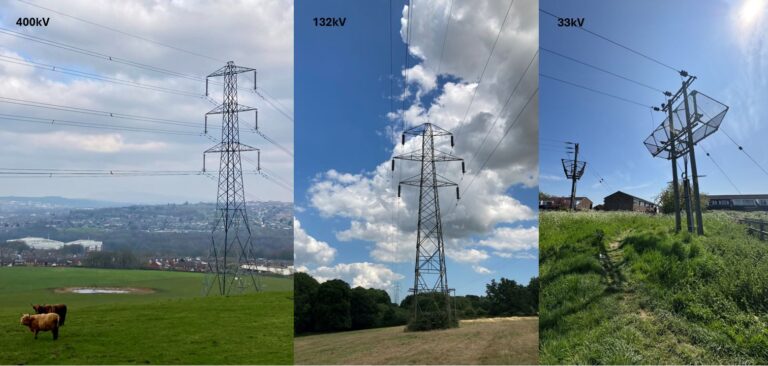
Those overhead electricity lines regularly seen dominating the landscape, are all governed by a combination of statutory regulations and industry guidelines. The stand-off safety distances will depend on the size of the apparatus, and the resulting building and construction restrictions can have a serious impact on the amount of developable area available on a site.
400kVs and 275kVs
Large steel lattice towers. No development is permitted within 25 metres on either side of these lines, and properties built within an additional 50 metre range will be affected by their visual impact.
132kVs
Lower in capacity than the 400kVs and the 275kVs, but still major infrastructure. Development is restricted within 15 metres on land which is either side of these lines, and a further 35 metres is usually taken into account in terms of their visual impact.
66kVs and 33kVs
If constructed on steel lattice towers, development on either side of these lines is restricted within 6 metres and 3 metres respectively, and a further 20 metres and 7 metres are considered to be visually impacted.
As a landowner or developer, it may be possible to have a line diverted underground, but you will need to make a strong case for arguing that its presence is affecting the value of your site/future development.
That said:
- National Grid will resist any proposal for diverting a 400kV or a 275kV, due to their importance to the UK network and the prohibitive cost of diverting them. They are almost never moved unless a project of national significance is involved, such as HS2.
- 132kVs can be moved if the section requiring diversion extends for more than three spans across the site. If the line is extending for less than three spans, National Grid will resist moving it, firstly because of the cost, and secondly, because the risk of faults occurring in the network is increased by diverting short spans.
Finally, bear in mind that even if a line can be moved, the cost of doing so may greatly exceed the cost to you if it is simply left in situ. The district network operator may agree to a diversion at the developer/landowner’s cost, or pay compensation in return for the apparatus remaining on the site.











